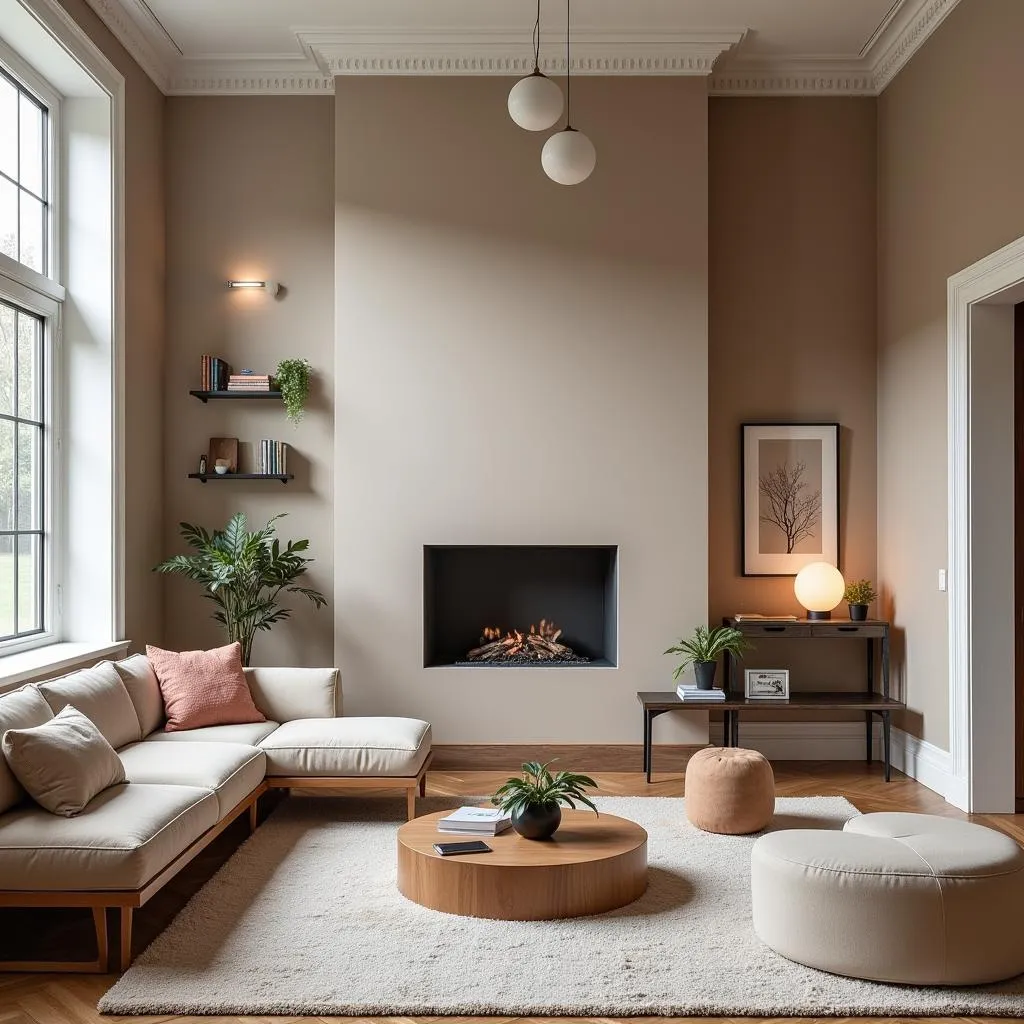Taupe is a versatile and sophisticated color that brings warmth and elegance to any space. This complex hue, often described as a blend of gray and brown, can range from light and airy to rich and grounding. If you’re looking to incorporate this timeless color into your home decor, this comprehensive guide will show you exactly how to make taupe color and unlock its full potential.
Understanding the Nuances of Taupe
Before diving into the mixing process, it’s helpful to understand what makes taupe so unique. Taupe is a neutral color, meaning it doesn’t fall into the warm or cool spectrum. This characteristic gives it incredible versatility, allowing it to complement a wide range of colors and design styles.
 Mixing paint to create taupe
Mixing paint to create taupe
Essential Materials for Mixing Taupe
Creating your own custom taupe paint is an exciting way to personalize your space. Here’s what you’ll need:
- Base Colors: Start with brown and gray paint as your primary colors.
- White and Black Paint: These will act as your lightening and darkening agents.
- Mixing Palette: Use a palette, paint tray, or any clean, flat surface.
- Paintbrushes or Stir Sticks: Choose the appropriate tools for mixing based on the amount of paint.
- Containers for Test Batches: Small containers are ideal for experimenting with different ratios.
Step-by-Step Guide to Making Taupe Paint
- Start with Brown: Begin by adding a small amount of brown paint to your mixing palette.
- Gradually Add Gray: Slowly incorporate gray paint into the brown, mixing thoroughly after each addition. The ratio of brown to gray will determine the undertone of your taupe.
- Adjust with White or Black:
- To lighten the taupe and create a softer, airier feel, gradually add small amounts of white paint.
- To darken the taupe and achieve a richer, more dramatic effect, carefully incorporate small amounts of black paint.
- Test Your Color: Before committing to a large batch, test your mixed taupe color on a piece of white paper or a hidden area of the wall you intend to paint. Allow the paint to dry completely to see the true color.
Tips for Mixing the Perfect Taupe
- Start Small: Always begin with small amounts of paint and gradually add more until you achieve the desired shade.
- Document Your Ratios: Keep track of the paint ratios you use for each test batch so you can easily replicate the color if needed.
- Consider Lighting: Natural and artificial lighting can affect how colors appear. Test your taupe color in different lighting conditions to ensure you’re happy with the final result.
Variations of Taupe and How to Achieve Them
- Warm Taupe: Increase the ratio of brown to gray and add a touch of yellow or red for a warm, inviting feel.
- Cool Taupe: Use more gray than brown and consider adding a hint of blue or green for a calming and sophisticated touch.
- Neutral Taupe: Aim for a balanced ratio of brown and gray, adjusting with white or black to achieve the desired lightness or darkness.
 Interior design featuring taupe walls
Interior design featuring taupe walls
Incorporating Taupe into Your Home Decor
Taupe’s versatility makes it an excellent choice for various design styles and rooms in your home.
- Walls: Create a timeless and elegant backdrop for your furniture and decor with taupe walls.
- Furniture: Taupe sofas, armchairs, and headboards add a touch of sophistication and warmth to any space.
- Accents: Incorporate taupe through throw pillows, curtains, and rugs to add depth and visual interest.
Frequently Asked Questions about Making Taupe Color
Q: Can I use acrylic paint to make taupe?
A: Absolutely! Acrylic paints are an excellent choice for mixing taupe due to their versatility and easy-to-blend nature.
Q: What colors go well with taupe?
A: Taupe pairs beautifully with a wide range of colors, including white, cream, gray, blue, green, pink, and even black.
Q: What is the difference between taupe and beige?
A: While both are neutral colors, taupe typically has a stronger gray undertone, while beige leans towards yellow or red.
Q: Is taupe a good color for a small room?
A: Yes, lighter shades of taupe can make a small room feel larger and more open.
Q: Can I mix taupe with other paint colors to create new shades?
A: Certainly! Experimenting with different color combinations can result in unique and personalized shades.
Need Help with Your Next Painting Project?
Choosing the right colors and achieving the perfect shade can be challenging. If you need expert guidance or assistance with your painting project, don’t hesitate to contact us.
Call us: 0373298888
Email us: [email protected]
Visit us: 86 Cầu Giấy, Hà Nội
Our team of color specialists and painting professionals is here to help you transform your vision into reality.

